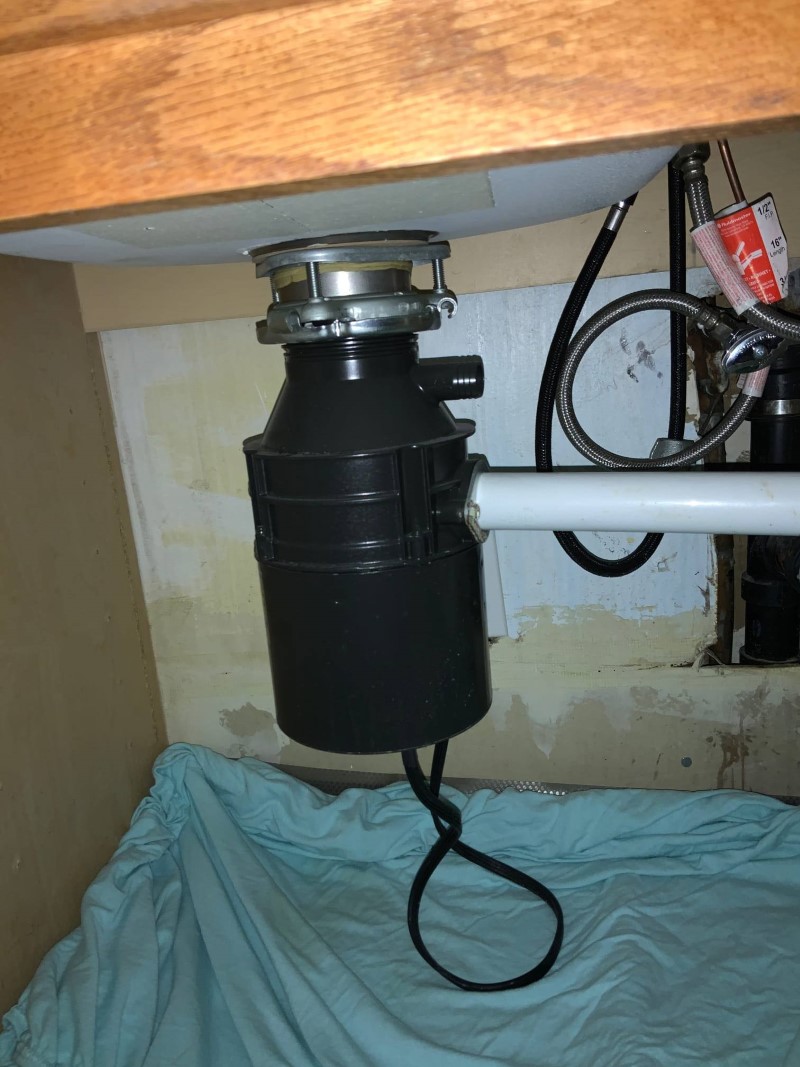Step-by-Step Techniques for Repairing a Leaky Garbage Disposal
Step-by-Step Techniques for Repairing a Leaky Garbage Disposal
Blog Article
This article following next involving Garbage Disposal Leaking From Bottom is seriously interesting. Give it a try and draw your own assumptions.

Garbage disposals are essential kitchen area home appliances that aid in dealing with food waste efficiently. Nevertheless, a dripping garbage disposal can be an irritating and unpleasant trouble to manage. Luckily, numerous leaks can be dealt with quickly with a few straightforward steps. In this write-up, we will certainly discuss just how to repair a dripping waste disposal unit successfully.
Intro
Garbage disposals are mounted under kitchen sinks and are created to shred food waste right into smaller items, permitting it to go through the pipes system easily. While these gadgets are normally reliable, leaks can happen gradually as a result of deterioration, loosened links, or damages to the device.
Usual Causes of Leaks in Trash Disposals
Worn Seals and Gaskets
Seals and gaskets play an important role in stopping water from leaking out of the garbage disposal. With time, these components can deteriorate, resulting in leaks around the disposal device.
Loose Connections
The links in between the garbage disposal and the pipes system can become loosened gradually, creating water to leak out throughout operation.
Splits or Openings in the Disposal Unit
Physical damage to the waste disposal unit, such as cracks or openings in the housing, can additionally lead to leakages.
Determining the Source of the Leakage
Before trying to take care of a leaking waste disposal unit, it is essential to recognize the source of the leak. This can usually be done through aesthetic inspection or by performing basic tests.
Visual Evaluation
Check the garbage disposal device meticulously for any type of signs of water leakage. Pay very close attention to locations around seals, gaskets, and link points.
Examining for Leaks
One means to examine for leaks is by running water via the disposal device and checking for any kind of noticeable signs of leakage.
Devices and Materials Needed for Taking Care Of a Leaking Garbage Disposal
Before starting the repair work process, gather the essential devices and materials, including a screwdriver, flexible wrench, plumber's putty, replacement seals or gaskets, and epoxy or patching product for fixing splits or holes.
Step-by-Step Guide to Repairing a Leaking Garbage Disposal
Switch off the Power
Prior to attempting any type of repair work, make certain that the power to the garbage disposal unit is shut off to prevent the threat of electric shock.
Find the Leakage
Identify the exact place of the leak and determine the cause.
Tighten up Links
Utilize a wrench to tighten any type of loosened links between the disposal unit and the plumbing system.
Change Seals or Gaskets
If the leakage is due to worn seals or gaskets, eliminate the old elements and replace them with new ones.
Patching Fractures or Holes
For fractures or holes in the disposal system, usage epoxy or an appropriate patching material to secure the broken location.
Checking the Waste Disposal Unit After Repair Service
When the repair work is full, examine the waste disposal unit by running water with it to guarantee that the leakage has actually been fixed.
Preventive Maintenance Tips to Stay Clear Of Future Leaks
To avoid future leaks, it is necessary to carry out regular maintenance on your garbage disposal. This consists of keeping it clean, avoiding placing non-food items or tough things down the disposal, and periodically checking for leaks or various other problems.
Final thought
Finally, taking care of a dripping garbage disposal is a reasonably straightforward procedure that can be completed with fundamental devices and products. By adhering to the steps described in this write-up and practicing preventive maintenance, you can keep your garbage disposal in good working problem and stay clear of pricey repairs in the future.
HERE’S HOW TO FIX YOUR GARBAGE DISPOSAL
WHAT TO DO IF SOMETHING IS STUCK IN YOUR GARBAGE DISPOSAL
If the impeller won’t turn, there’s probably something stuck in the disposal. It could be a steak bone or peach pit, although plumbers report pulling all sorts of inappropriate objects out of disposals, such as bottle caps or aluminum foil. Make sure power to the disposal is off, and look inside to see if you can see the source of the jam.
Never stick your fingers in a disposal. Pull out anything you see with tongs or pliers.
If the disposal still won’t work, it may be time to call a plumber or consider buying a new disposal. GEM Plumbing & Heating is here for all of your garbage disposal needs.
WHAT TO DO IF YOUR GARBAGE DISPOSAL DRAIN IS CLOGGED
Take everything out from underneath your sink and put a bucket or other container under your disposal to catch any water that drains out. Disconnect your disposal from the power supply. If it’s plugged into a wall outlet, unplug it. If it’s hardwired into an electrical box, go to the electrical panel and turn off the breaker for the disposal. Pour ¼ cup of baking soda into the drain, followed by ½ cup of white vinegar. Give the solution a few minutes to fizz and do its work. Look into the disposal with a flashlight to see if you can see an object that might be causing the clog. If you see it, remove it using tongs or pliers. MORE TIPS ON DEALING WITH A CLOGGED GARBAGE DISPOSAL
Never use drain cleaner in a garbage disposal. It can damage the plastic parts inside the disposal. You can also be splashed with the caustic liquid while working to clear the clog. Beware! Never stick your fingers into a garbage disposal. Trust us — not a good idea. In many instances, your dishwasher drains through your garbage disposal. This allows the disposal to grind any large food particles that may be drained out of your dishwasher. There are some jurisdictions, however, where the plumbing code prohibits such a connection. WHAT TO DO WHEN YOUR DISHWASHER DRAINS THROUGH THE DISPOSAL
Run some water in the sink so your plunger has at least a ½-inch of water to create a seal and plunge vigorously up and down several times. You may need to repeat this several times. Run hot water down the drain to clear any residue that remains.

I'm just very serious about Why Is and I'm hoping you appreciated the new entry. Do you know another individual who is looking into the niche? Be sure share it. I recognize the value of reading our article about How to fix a pretty consistent leak from my garbage disposal.
Book An Estimate Now Report this page